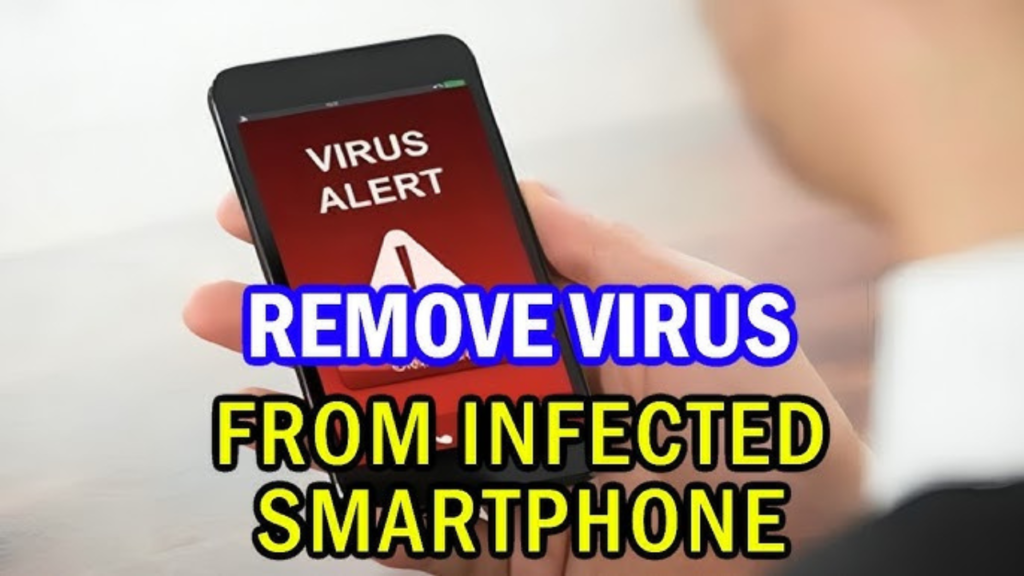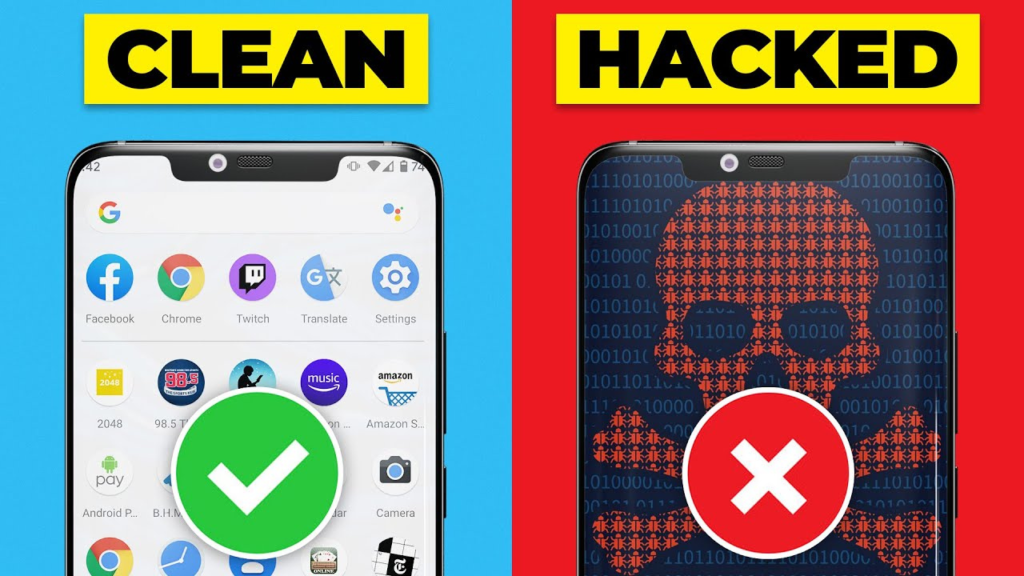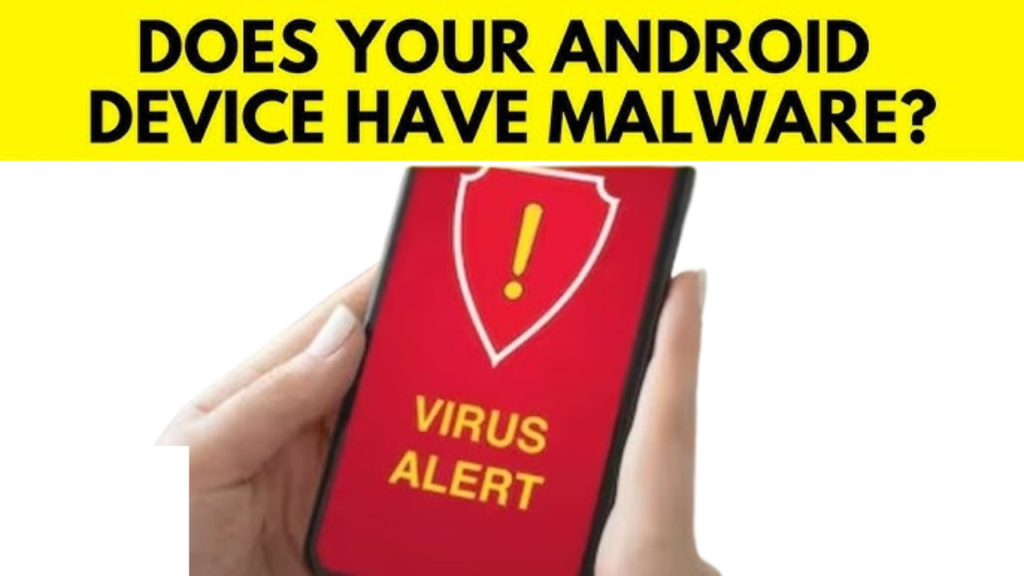LIn these days of virtual age, mobile devices have become critical. They are used for diverse features starting from verbal exchange, entertainment, and navigation to engaging in banking transactions and having access to touchy records. However, with the massive use of smartphones, a commonplace situation that arises is, can mobile devices be infected with malware?Mobile devices, just like pc systems, can truly be cooperated via malware.
In fact, the growing cleverness of cyber threats implies that mobile clients are at a normal hazard of falling victim to malicious software program software. Whether you are the user of an Android phone or an iPhone, it is vital to identify how mobile malware works, how it spreads, and what steps can be taken to keep away from infection.
Table of Contents
Understanding Malware and Its impact on cellular devices
Malware is a time period used to explain an in depth variety of malicious software application packages designed to damage, disrupt, or advantage unauthorized get entry to a machine. Within the context of mobile devices, malware can are available in many office work, which includes viruses, worms, Trojans, ransomware, and spyware. Those malicious applications can scouse borrow touchy statistics, reveal your sports, show intrusive classified ads, or maybe lock your device to call for a ransom.

Types of Malware that may infect cellular devices
Mobile gadgets are vulnerable to numerous types of malware, and cybercriminals use a big selection of techniques to infiltrate those devices. Underneath are a number of the most common kinds of cell malware:
Viruses
cellular viruses are packages that attach themselves to legitimate apps or archives, which, while finished, unfold the infection to other documents and apps. This kind of malware can corrupt your device’s software program or reason gadget crashes.
Trojan horses
hide themselves as valid packages or software. When downloaded, they trick customers into putting in malicious code that compromises device protection.
Spyware
This kind of malware surreptitiously monitors the individual’s sports, logging keystrokes, taking photos screenshots, or monitoring GPS area. spyware can be used to thieve private information including login identifications or financial data.
Adware
at the same time as not continually malicious in motive, adware can grow to be a nuisance by using showing unwanted advertisements and consuming machine assets. But, in a few instances, adware can be bundled with different varieties of malware that could lead to extra excessive infections.
Ransomware
one of the maximum risky types of malware, ransomware locks the consumer’s cell tool and needs fee for it to be unlocked. The attacker usually demands fee in cryptocurrency, making it tougher to song the criminals.
Worms
Worms are self-replicating applications that unfold over networks, and if your cellular tool is hooked up to a susceptible network, it is probably infected with a malicious program.How can mobile gadgets be infected with Malware?Now that we realize can mobile devices be infected with malware, allows explore how those devices get infected inside the first vicinity. There are numerous ways that malware can spread to mobile gadgets:
Downloading Malicious Apps
The most common method that mobile devices get infected with malware is thru downloading and installing malicious apps. These apps regularly masquerade as valid apps in app stores. Once installed, the malware can take advantage of vulnerabilities in the system or hijack private statistics.
Downloading Malicious Apps
Phishing attacks are a form of social manufacturing wherein attackers trick customers into clicking on malicious hyperlinks or downloading infected supplements. those links frequently seem in emails, text messages, or social media posts and can bring about a malware infection.
Public Wi-Fi Networks
when the use of public wireless, cellular devices are prone to being attacked by using cybercriminals who can intercept the relationship. Attackers can also use this possibility to inject malware into a device or scouse borrows sensitive facts.
Infected websites
websites which have been compromised via attackers can also host malware that routinely downloads while visited. This is a structure of “pressure-by means of download,” wherein the malware is mounted without the user’s expertise or consent.
USB and Bluetooth devices
Malware can also spread through infected USB gadgets or Bluetooth connections. If your cell tool is hooked up to an infected USB pressure or Bluetooth device, the malware ought to without difficulty spread.
Third Party App shops
despite the fact that Google Play store and Apple’s App keep have stringent hints, malware can still locate its way onto gadgets via 1/3-birthday party app stores which have fewer security features.

Common symptoms that your mobile device has been infected with Malware
It may every so often be challenging to discover whether your device is infected with malware. However, a few common symptoms indicate that your cell tool could be compromised:
● Sluggish performance: if your device is abruptly walking slower than normal, it is probably infected with malware that is consuming gadget assets.
● Increased information usage: Malware often runs within the historical past, using up your cell data for its personal purposes. If you notice an unexpected spike in information usage, it might be a sign of an infection.
● Unexplained Battery Drain: Malware often runs procedures in the history that could drain the battery quicker than common.
● Strange Pop-ups or Ads: in case you start seeing greater pop-united states of America or commercials than traditional, your tool might be infected with spyware or other types of malware.
● Unfamiliar Apps or Settings: if you notice new apps or changes to settings which you didn’t make, it might be the end result of malware set up.
● Unusual Activity on Accounts: in case your social media or banking money owed are all of sudden sending out spam messages or being utilized in ways you don’t understand, your tool may be infected with spyware or a key logger.
Can mobile gadgets be infected with Malware although they have got Antivirus software?
Many human beings expect that putting in antivirus software program will protect their devices from malware. While this is true to some point, no software can promise complete safety from all threats. Malware creators are endlessly developing their techniques, and some state-of-the-art malware worries can skip antivirus detection.
To further shield in antagonism to malware, it’s essential to mix antivirus software program with different blocking measures, including keeping your functioning system and apps up to date, heading off suspicious hyperlinks, and using a virtual personal network (VPN) while getting access to public wireless.
Ways to protect mobile devices from Malware
Given the developing risk of cellular malware, it’s far impossible to take steps to guard your tool from infection. Here are a few key strategies to assist make certain your cell tool stays impervious:
● Install Apps only from trusted on resources: stick to official app stores like Google Play and the Apple App store to limit the hazard of downloading malicious apps. Keep away from third-celebration app stores which can be much less secure.
● Keep Your Operating System and Apps Updated: regular software program updates regularly consist of patches that repair acknowledged safety vulnerabilities. Make sure your tool’s operating system and apps are always up to date.
● Use a Reputable Mobile Antivirus App: whilst no longer foolproof, a cellular antivirus app can assist come across and dispose of malware. Look for apps with suitable critiques and functions that defend towards a wide variety of mobile threats.
● Be Wary of Phishing Attempts: Be careful about clicking on links or starting attachments in emails, messages, or social media posts. If something looks suspicious or too good to be authentic, avoid it.
● Enable Two-Factor Authentication (2FA): shield touchy accounts with two-issue authentication to feature a further layer of protection. Even in case your device gets infected, 2FA can help save you unauthorized get entry to your accounts.
● Avoid Public Wi-Fi for Sensitive Transactions: Public Wi-Fi networks are not tightly closed and can divulge your device to ability assaults. While gaining access to touchy bills or making transactions, use a VPN or avoid public networks altogether.
● Monitor App Permissions: regularly check the permissions granted to apps in your tool. Revoke any permission that appears useless for the app’s functionality.
● Use a Secure Lock Screen: make certain to fasten your device with a strong password, fingerprint, or facial reputation. This could prevent unauthorized get entry to for your non-public statistics.
Conclusion: Can mobile devices be infected with Malware?
As smartphones Changed the world So, can mobile devices be infected with malware? The solution is yes. Much like computer systems, mobile devices are at risk of a variation of cyber threats. As mobile devices come to be an essential part of our lives, it’s important to be aware of to the risks related to malware and take steps to secure your tool.
FAQs
Can phones be infected with malware?
Mobile devices can become infected with malware and viruses in a variety of ways: Fake apps: Downloading an app to your mobile device from third party sites can put you at risk of encountering malicious apps.
How do I know if my phone had a malware?
Find more signs of malware• Alerts about a virus or an infected device.• Anti-virus software you use no longer works or runs.• A significant decrease in your device’s operating speed.• A significant, unexpected decrease in storage space on your device.• Your device stops working properly or working altogether.
Does malware target mobile devices?
Having remote access to critical business systems and data enables teams to communicate, collaborate, and work more efficiently – wherever they are. But this convenience also makes mobile devices an ideal target for cybercriminals. Among the growing list of threats, mobile malware is perhaps the most prevalent.
How common is malware on phones?
Android devices are 50 times more likely to be infected with malware than iOS devices. Over the past decade, there has been an 87% increase in malware infections. The cost of cybercrime is predicted to reach $8 trillion in 2023.
How do I check if my phone is safe or not?
Just go to this Google security site and click through any issues it presents. It’ll confirm that you’ve successfully performed some of the actions we’ve already discussed and then look for any other potential red flags or opportunities for improvement.

